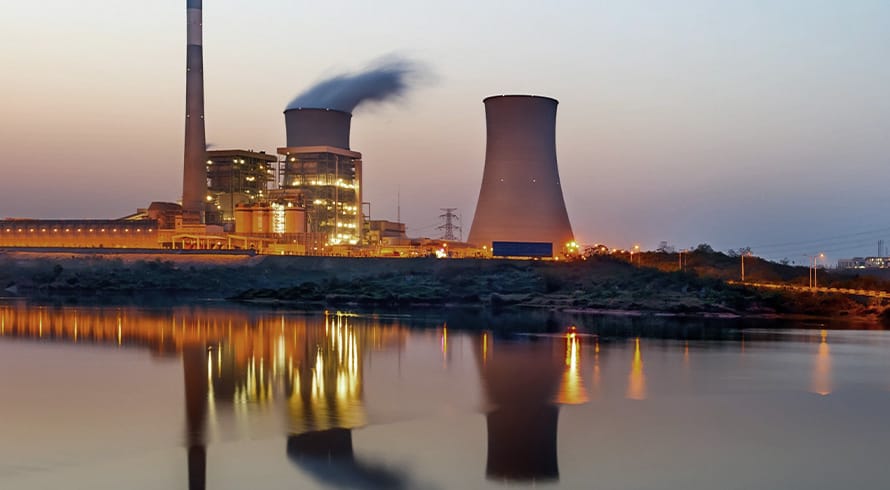The impact of carbon regulation on the mining industry
The LEDS flows from Article 4.19 of the Paris Agreement, which requires signatory states to strive to “formulate and communicate long-term low greenhouse gas (GHG) emission development strategies, mindful of Article 2 of the Paris Agreement and taking into account their common but differentiated responsibilities and respective capabilities, in the light of different national circumstances.”
South Africa ratified the Paris Agreement in November 2016 and, in terms of its Nationally Determined Contribution (NDC), committed to a peak, plateau and decline GHG emissions trajectory range, which is estimated to range between 398 and 614 Mt carbon dioxide equivalent (CO2-eq) by 2025 and 2030.
The mining sector has been identified in the LEDS as one of the industries in which GHG emissions rose “substantially”, accounting for 6% of the total emissions in the South African industrial sector.
Given its impact, mining has historically been central to the South African environmental law regime, particularly insofar as it concerns the regulation of water use, waste management and financial provision. With the acute global focus on climate change mitigation, the development of an integrated carbon and air quality regulatory framework has however gained momentum. The below summary sets out the most recent proposed legislative measures aimed at reducing the country’s carbon footprint that are likely to impact on the industry.
Carbon Tax
Following almost a decade of discussions and consultation with stakeholders, the Minister of Finance tabled the revised Carbon Tax Bill (Bill) in Parliament at the end of November 2018 and announced that carbon tax is set to become effective from 1 June 2019 (the Implementation Date).
The Bill proposes the imposition of a tax at a rate of R120 per ton CO2-eq of GHG emissions on entities conducting activities that exceed the tax-free thresholds. Carbon tax must be levied in respect of the sum of a taxpayer’s CO2-eq of GHG emissions over a tax period resulting from fugitive emissions and industrial and fuel combustion processes. Tax liability will be self-reported as determined at company level with reference to a DEA approved methodology (Liability Assessment).
Aligned with the Intergovernmental Panel for Climate Change’s Source Codes, fuel combustion activities for mining and quarrying, coal mining and handling, underground mines and surface mines are listed as qualifying emission activities. Additionally, other listed emission activities often undertaken by mines could also trigger carbon tax liability, for example treatment and discharge of industrial waste water.
To cushion the blow, the Bill allows for carbon tax to be implemented in a phased manner by providing for various transitional tax-free allowances. Treasury has assured emitters that the result will be a “modest” carbon tax rate, ranging from R6 to R48 per tonne of CO2-eq emitted, and the additional revenue recycling measures will help to mitigate short-term negative impacts on the economy and jobs.
Despite the above and prior to publication of the revised Bill, the Minerals Council South Africa (Minerals Council) adopted a firm stance in early 2018 against the implementation of the then draft Bill, stating that the imposition of carbon tax “will render most of the mining operations marginal, add significant costs to mining operations, consequently undermining the capability of the sector to contribute to sustainable employment levels.” Other concerns raised included the risk of industry losing its global competitiveness, and that weakening profit margins will plummet.
To pacify mining houses, Treasury undertook the following in its Explanatory Memorandum to the Bill (Memo) – “To cushion the potential adverse impacts on energy intensive sectors such as mining and iron and steel, the introduction of the carbon tax for the first phase will not have an impact on the price of electricity. This will be achieved through a tax credit for the renewable energy premium built into the electricity tariffs and a credit for the existing electricity generation levy”.
The Minerals Council’s submissions were however based on modelling of phase 2, when carbon tax will no longer be electricity neutral. It therefore seems that their base case remains – “given the price taking nature and marginal state of the mining sector, the carbon tax is negative for the sector, for the fact that it increases input costs therefore reducing profitability”.
Integrated carbon quality regulatory framework
The Bill heads an integrated regulatory framework set to be implemented in a cooperative manner by the South African Revenue Services and DEA. Associated components of the framework include inter alia the:
- National Greenhouse Gas Emission Reporting Regulations (GHG Reporting Regulations);
- Carbon offsets; and
- Carbon Budgets, which is set to be regulated under the Climate Change Bill.
Additionally, emissions are simultaneously being administered in terms of the main statute regulating air quality, namely the National Environmental Management: Air Quality Act, No 39 of 2004 (NEMAQA).
GHG Reporting Regulations
Flowing from the Paris Agreement, the GHG Reporting Regulations were published in April 2017 with the overarching purpose of introducing a national reporting system for the transparent reporting of GHG emissions. This system is seen as fundamental to the carbon tax regime as the data collected in terms of these Regulations will be used to verify a company’s own Liability Assessment. To date, reporting in terms of the GHG Reporting Regulations has however proven to be problematic. In response, DEA recently published a notice providing for a changed procedure involving the submission of data through electronic mail. Despite the initial cut-off date for registration being 31 March 2018, data providers are given an additional 30 days until 4 March 2019 to register.
Carbon Offsets
As a complimentary feature of the carbon tax mitigation strategy that reduces the financial burden on businesses, s13 of the Bill proposes a 5% tax-free allowance for companies utilising carbon offsets. Draft Regulations on the Carbon Offsets (Offset Regulations) were published on 12 November 2018 in terms of s19(c) of the Bill.
The Offset Regulations specify eligibility criteria for offset projects and restrictions on utilising approved projects for purposes of carbon tax allowances, where the latter depends on whether the offset existed before or after the Implementation Date. Certain projects are excluded from the offset regime (and therefore the carbon tax allowance scheme), including nuclear energy activities and specific renewable energy projects.
Carbon budget
Participation in South Africa’s carbon budget will entitle participating companies to a further 5% tax-free allowance under s12 of the Bill. To date, participation in phase 1 of the carbon budget has been voluntary and unregulated, with DEA seeking to employ this phase to utilise the information gained as a guide to structure and implement a compulsory phase 2.
The carbon budget is set to be formalised under the current Climate Change Bill, which states that the Minister of Environmental Affairs will be obligated to determine a GHG emission threshold for purposes of determining carbon budget allocations.
The Memo however stipulates that the allowance is limited to participation in phase 1 of the carbon budget and requires written consent from DEA.
Treasury has further confirmed that, to ensure alignment between the carbon tax and carbon budgets, it has agreed with DEA that emissions exceeding a taxpayer’s carbon budget will be taxed at a higher rate with no tax-free allowances applicable. From reports it is understood that the rate will be as high as R600 per CO2-eq.
NEMAQA and Climate Change Bill
Regulation of GHG emissions under NEMAQA and the Climate Change Bill is also set to become more stringent and diversified in an attempt to meet the NDC. This is evidenced by inter alia the:
- the Declaration of Greenhouse Gases as Priority Air Pollutants and National Pollution Prevention Plans Regulations, which require a person conducting an identified production processes involving the emission of priority GHGs in excess of 0.1 megatonnes annually (reported as CO2-eq), to submit a pollution prevention plan to the Minister of Environmental Affairs for approval and to annually report on compliance;
- recent restriction imposed on existing plants seeking to apply for rolling postponements in meeting the minimum emission standards prescribed for new plants under NEMAQA. Applicants can now only apply for a once-off maximum five-year postponement and need to do so by 31 March 2020; and
- proposal in the Climate Change Bill that the Minister of Environmental Affairs, together with a Climate Change Committee, must determine and regulate sectoral emissions targets (SET). Implementation of SETs could lead to further sector-specific measures aimed at addressing climate change such as sector emissions reduction plans which will provide how the relevant sector and sub-sector will meet the SETs within five years of the publication of the SETs.
Conclusion
What is evident from the above is that the mining industry is not only facing the impending pressure of increased input costs under the carbon tax regime, but also the difficulty of navigating a complex regulatory framework administered by different organs of state.
Looking to the legislative and policy environment more generally, the concern that the imposition of the carbon tax regime in the existing policy framework will result in legislative uncertainty and policy misalignment is understandable.
There is, however, a growing need to reconcile the potential consequences of stunted development and reduced global competitiveness with the commitment to creating a low-emission and climate resilient society and economy. Therefore, to fulfil the LEDS’ objectives, a careful balance must be struck between enforcing industry-wide CO2 reduction and maintaining socio-economic development measures. Although phase 1 of the carbon tax regime does appear to cater for this, the transition into phase 2 and general over-regulation of air quality may prove it to be all too idealistic.
The information and material published on this website is provided for general purposes only and does not constitute legal advice. We make every effort to ensure that the content is updated regularly and to offer the most current and accurate information. Please consult one of our lawyers on any specific legal problem or matter. We accept no responsibility for any loss or damage, whether direct or consequential, which may arise from reliance on the information contained in these pages. Please refer to our full terms and conditions. Copyright © 2026 Cliffe Dekker Hofmeyr. All rights reserved. For permission to reproduce an article or publication, please contact us cliffedekkerhofmeyr@cdhlegal.com.
Subscribe
We support our clients’ strategic and operational needs by offering innovative, integrated and high quality thought leadership. To stay up to date on the latest legal developments that may potentially impact your business, subscribe to our alerts, seminar and webinar invitations.
Subscribe




